Another Autumn another update from the good people at Tableau. Tableau 10.4 acts as the third major update of the software within the 2017 calendar year. Let’s have a look at the main new features of 10.4 on both Tableau Server and Tableau Desktop that will aid in the analyses and organisation of data.
Tableau Server
Looking at the new features in Tableau Server 10.4, there is a clear emphasis on governance and proper usage of data. The new features seem to help the server admin target the reduction in the use of old data models to reduce timing looking for data and to ensure people are using the same data sources and “singing from the same hymn sheet” as such.
This has been done through the following features:
1. Data Source Certifications
This is what seems to be the most significant new feature for Tableau Server. Project leaders as well as site and server administrators can now gold-standard or certify the most relevant and updated data sources. There is also a feature for the admin to include a note of why the source can be trusted (see Figures 1 & 2).
Its purpose is to reduce confusion and search time when looking for the relevant data sets on Tableau Server. Data sources that are certified are given preferential treatment in searches as they are promoted over non-certified sources to the direct user. This is a way of reducing the number of access restrictions that the admin will need to govern, as users are “hand-held” to the data sources they need.
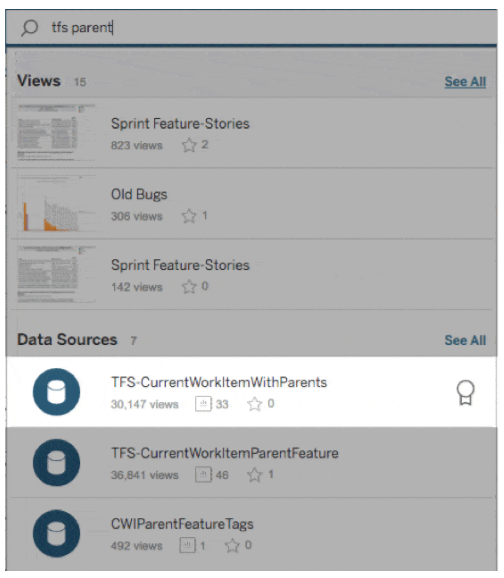
Figure 1: Data Certification and data source prioritising.
2. Support for Recommended Data Sources
A recommended data source search feature has been added to Tableau Server. Like Google, certain topics are endorsed, as the user types, based on the user’s preferences. The main purpose of this is to personalise the experience for the user and to help the server admin by improving discoverability of relevant data, thus encouraging proper data usage. In the context Tableau, the recommendations are formulated from what users with similar usage behaviour have looked at. Daily updates keep this search relevant and up to date.

Figure 2: Data Certification commenting.
3. Enhanced Commenting
Personally, I have found the commenting capabilities of Tableau obsolete until now. Tableau have redesigned and rethought the commenting. The pane being moved from the bottom of the screen (often cut out of the screen and forgotten) to the right so both text and graphics can be seen simultaneously.
Commenting capabilities have also gone a step further as it is possible to have interactive snapshots to highlight which aspects of the graphics you want your audience to concentrate on.
This function is also available on Tableau Online, and these new functions can be viewed on Tableau Mobile.
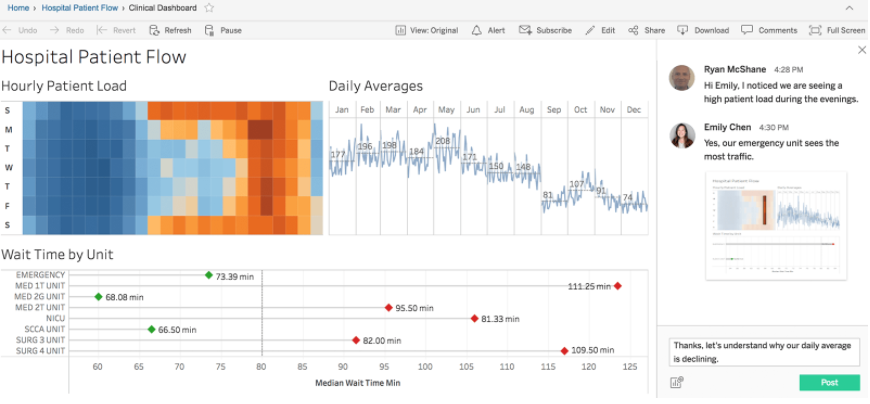
Figure 3: Commenting capabilities.
4. Views History
New to Tableau Server and Tableau Online, the owner of a view can see who in the company has seen the view. This is done by clicking on the ellipsis in the top right-hand corner of the main site page and clicking on “Who has seen this view?”
Tableau Desktop
The new features in Tableau Desktop 10.4 cluster around the idea of making the data and workbooks easier to maintain and design, as well as easing the interactive between Tableau Server and Tableau Desktop. This has happened through the following:
1. Line Command Removal
When downloading Tableau Desktop or Tableau Reader through the command line prompt, it is possible to automatically uninstall previous versions. This feature is only supported back until Tableau 9.3. Any versions before this will have to be uninstalled manually.
2. Tableau Desktop & Server Version Compatibility
Before 10.4, both Tableau Desktop and Tableau Server had to be in the same version if a user wanted to publish a workbook to Tableau Server. Now it is possible for a new Tableau Desktop workbook to be published to an older version of Tableau Server. This happens as the user is warned that the workbook is to be downgraded to the version of Tableau Server it is running on.
3. High Resolution Support for Windows
A feature that is a crowd-pleaser at InterWorks is the support of high DPI resolution. Gone are the days of needing to reformat your dashboard on high-scaling screens. You can now build confidently knowing that scaling won’t impact your design.
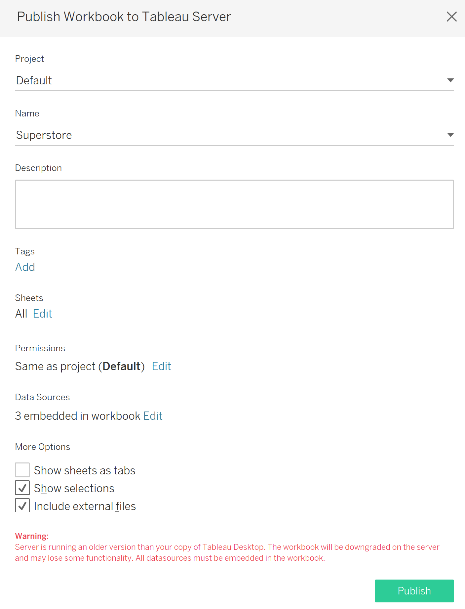
Figure 4: Desktop-Server compatibility.
4. Precise Dashboard Formatting
Desktop 10.4 has included a padding capability that allows the user to precisely position items on the dashboards. The option to have colour in both the background and the border allows visual highlighting and separation at ease. In the figure below, make note of the different sized borders in green and gold. This are edited individually using the padding icon on the bottom left of the figure.
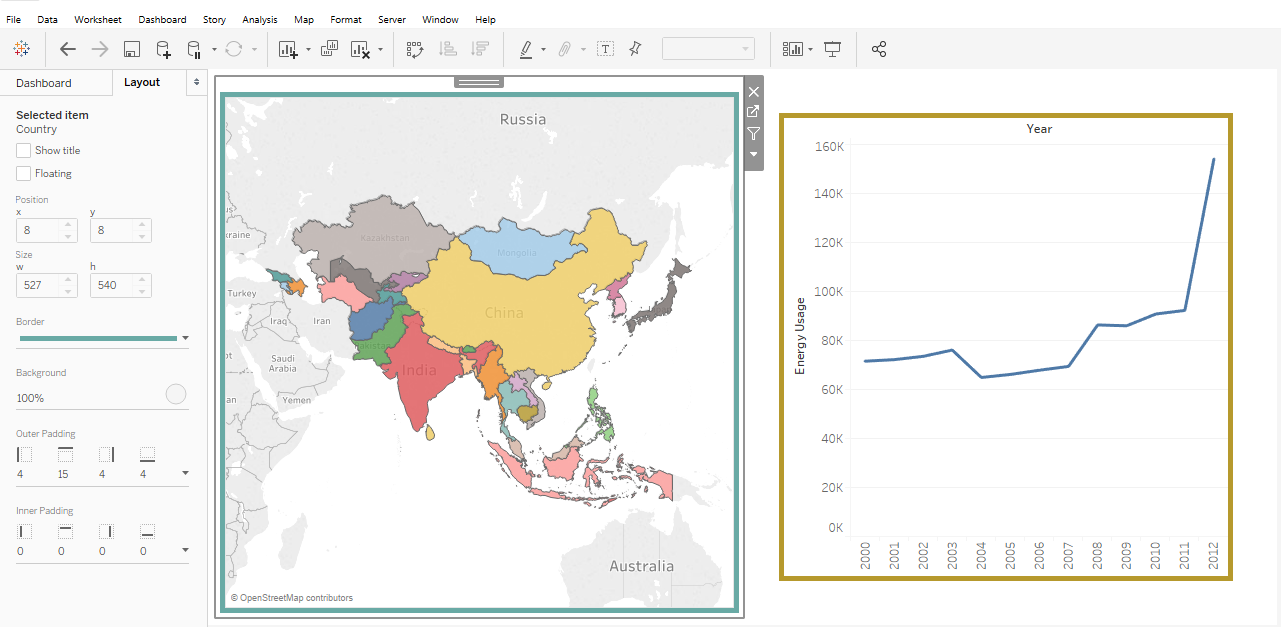
Figure 5: Precise dashboard format.
5. Web Authoring Features
Tableau has included new capabilities for authoring worksheets and dashboards online. These are:
- The ability to format the colour and size of grid lines while authoring on the web.
- Toolbar View: Web authoring previously only allowed viewing and interaction with the toolbar. 10.4 allows one to turn the toolbar on or off while online.
- Other: It is now possible to edit groups and change alias names while online.
6. Linear Geometries / Mapping Functions
Tableau has included new map features when connecting to spatial files with linear geometries. Previously, it was only possible to connect to one of either point geometries: linear geometries or polygons. Now it is possible to connect to the following spatial file types: Shapefiles, MapInfo tables, KML files and GeoJSON files. You can then create point, line or polygon maps using the data in those files.
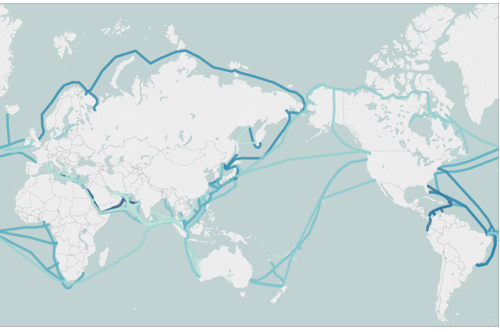
Figure 6: Linear Geometries feature.
Other new map features are the availability of 32,000 new U.S. cities and 10 new Nut Codes.
7. Connectors
Tableau has included a number of new connectors and connector features to its ever-growing list. These are:
- Denodo: This is a data virtualisation tool that brings in disparate data from any enterprise source, big data or cloud, rather than the underlying warehouse.
- Oracle via SSL (Service Socket Layer) on premise.
- Matlab integration using SCRIPT functions.
- SAP GUI 7.4 support: This is the new SAP UI Landscape XML support.
- Creation of SAP BW extracts without special licencing keys.

